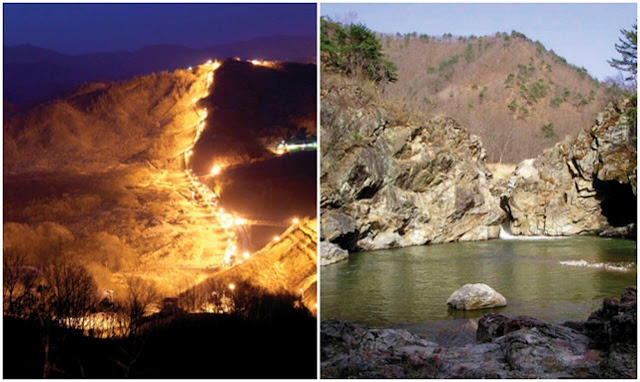Transforming the DMZ: The Benefits of Creating a Giant Ecological Peace Park on the Korean Peninsula
Creating a peace park in the DMZ would promote peace and reconciliation, protect endangered species and preserve unique ecosystems, serve as a symbol of hope and cooperation and provide opportunity for the two Koreas to work together.
Transforming the DMZ: The Benefits of Creating a Giant Ecological Peace Park on the Korean Peninsula
The Korean Peninsula has been divided for over 70 years, and the Demilitarized Zone (DMZ) that separates North and South Korea is one of the most heavily militarized borders in the world. The DMZ is a strip of land that runs across the peninsula, separating North and South Korea. It was established in 1953 as part of the armistice agreement that ended the Korean War. Today, the DMZ serves as a barrier between two countries that are technically still at war. However, in recent years, there have been calls to transform the DMZ into a giant ecological peace park. This idea has several benefits, including promoting peace and reconciliation between North and South Korea, protecting endangered species and preserving the unique ecosystems of the region.
Promoting Peace and Reconciliation
Creating a peace park in the DMZ would be an important step towards promoting peace and reconciliation between North and South Korea. The DMZ has been a symbol of division and conflict for decades, and transforming it into a peaceful, shared space would be a powerful symbol of hope and cooperation. The peace park would serve as a reminder of the shared history and culture of the Korean people, and would provide a space for people from both sides of the border to come together and build a more peaceful future. Additionally, the peace park would provide an opportunity for the two Koreas to work together on a shared goal, which could help to build trust and cooperation between the two countries.
Protecting Endangered Species
The DMZ is home to a wide variety of unique and endangered species. The area has been largely untouched by human activity for decades, and as a result, it has become a haven for wildlife. The DMZ is home to over 3,000 species of plants and animals, many of which are not found anywhere else in the world. For example, the DMZ is home to the Asiatic black bear, the Amur leopard, and the white-naped crane, all of which are listed as endangered species. By creating a peace park in the DMZ, it would be possible to protect and preserve these species and their habitats, which would be beneficial for both the environment and the local communities.
Preserving Unique Ecosystems
The DMZ is also home to a wide variety of unique and fragile ecosystems. The area is home to wetlands, forests, and grasslands that support a wide variety of plant and animal life. By creating a peace park in the DMZ, it would be possible to preserve these ecosystems, which are under threat from human activities such as deforestation, pollution and urbanization. A peace park would provide an opportunity to study and understand these ecosystems, which would be valuable for both conservation and scientific research. Additionally, preserving these ecosystems would also protect the local communities that depend on them for their livelihoods, such as fishing and agriculture.
In conclusion, the idea of turning the DMZ into a giant ecological peace park is a proposal with many benefits. It would promote peace and reconciliation between North and South Korea, protect endangered species and preserve the unique ecosystems of the region. The DMZ is a symbol of division and conflict for decades, but the creation of a peace park would be a powerful symbol of hope and cooperation. It would also provide an opportunity for the two Koreas to work together on a shared goal, which could help to build trust and cooperation between the two countries. Additionally, it would be an opportunity to protect and preserve the unique ecosystems, which are under threat from human activities, and to study and understand them.
